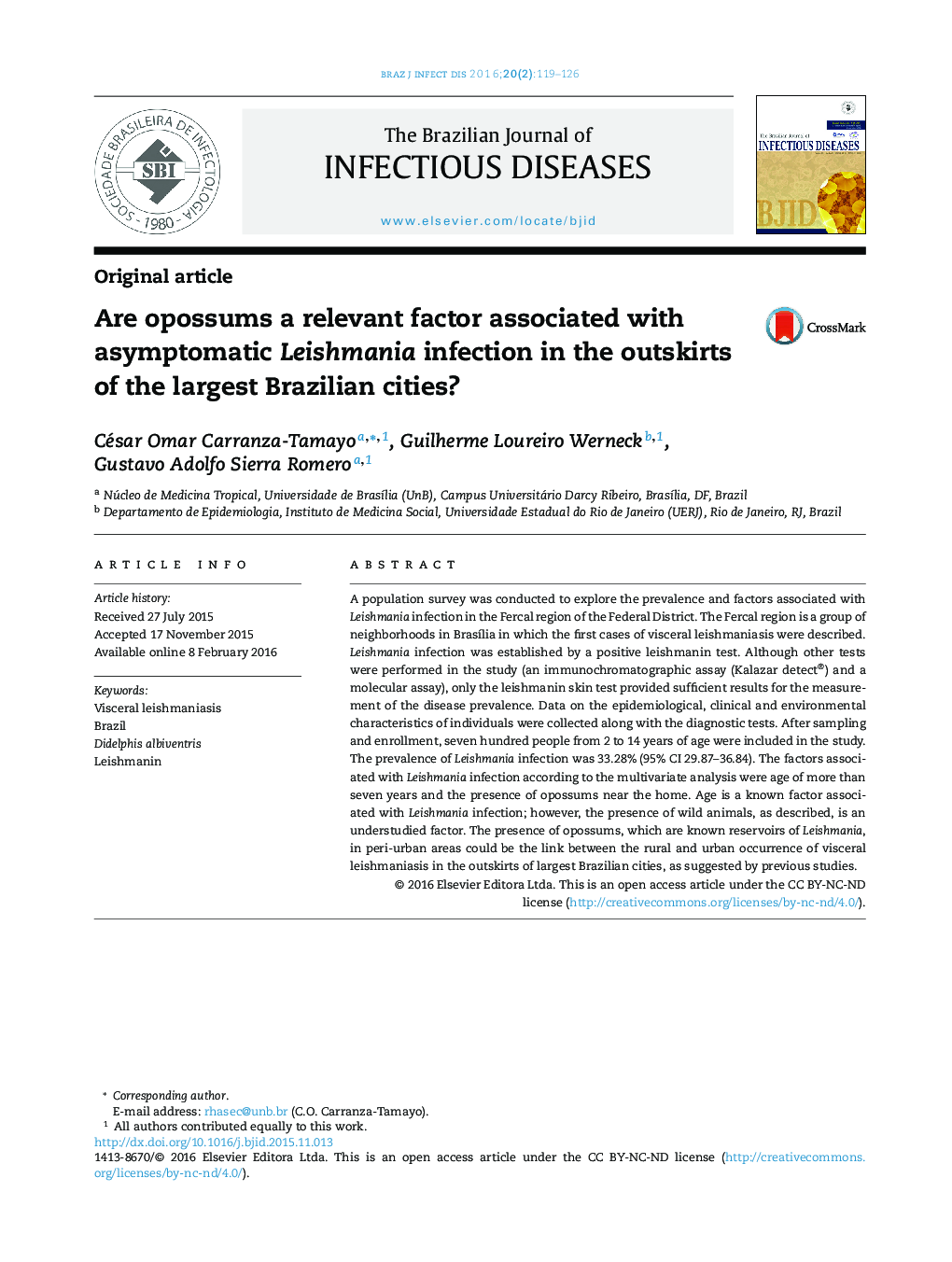| Article ID | Journal | Published Year | Pages | File Type |
|---|---|---|---|---|
| 3343731 | The Brazilian Journal of Infectious Diseases | 2016 | 8 Pages |
A population survey was conducted to explore the prevalence and factors associated with Leishmania infection in the Fercal region of the Federal District. The Fercal region is a group of neighborhoods in Brasília in which the first cases of visceral leishmaniasis were described. Leishmania infection was established by a positive leishmanin test. Although other tests were performed in the study (an immunochromatographic assay (Kalazar detect®) and a molecular assay), only the leishmanin skin test provided sufficient results for the measurement of the disease prevalence. Data on the epidemiological, clinical and environmental characteristics of individuals were collected along with the diagnostic tests. After sampling and enrollment, seven hundred people from 2 to 14 years of age were included in the study. The prevalence of Leishmania infection was 33.28% (95% CI 29.87–36.84). The factors associated with Leishmania infection according to the multivariate analysis were age of more than seven years and the presence of opossums near the home. Age is a known factor associated with Leishmania infection; however, the presence of wild animals, as described, is an understudied factor. The presence of opossums, which are known reservoirs of Leishmania, in peri-urban areas could be the link between the rural and urban occurrence of visceral leishmaniasis in the outskirts of largest Brazilian cities, as suggested by previous studies.
